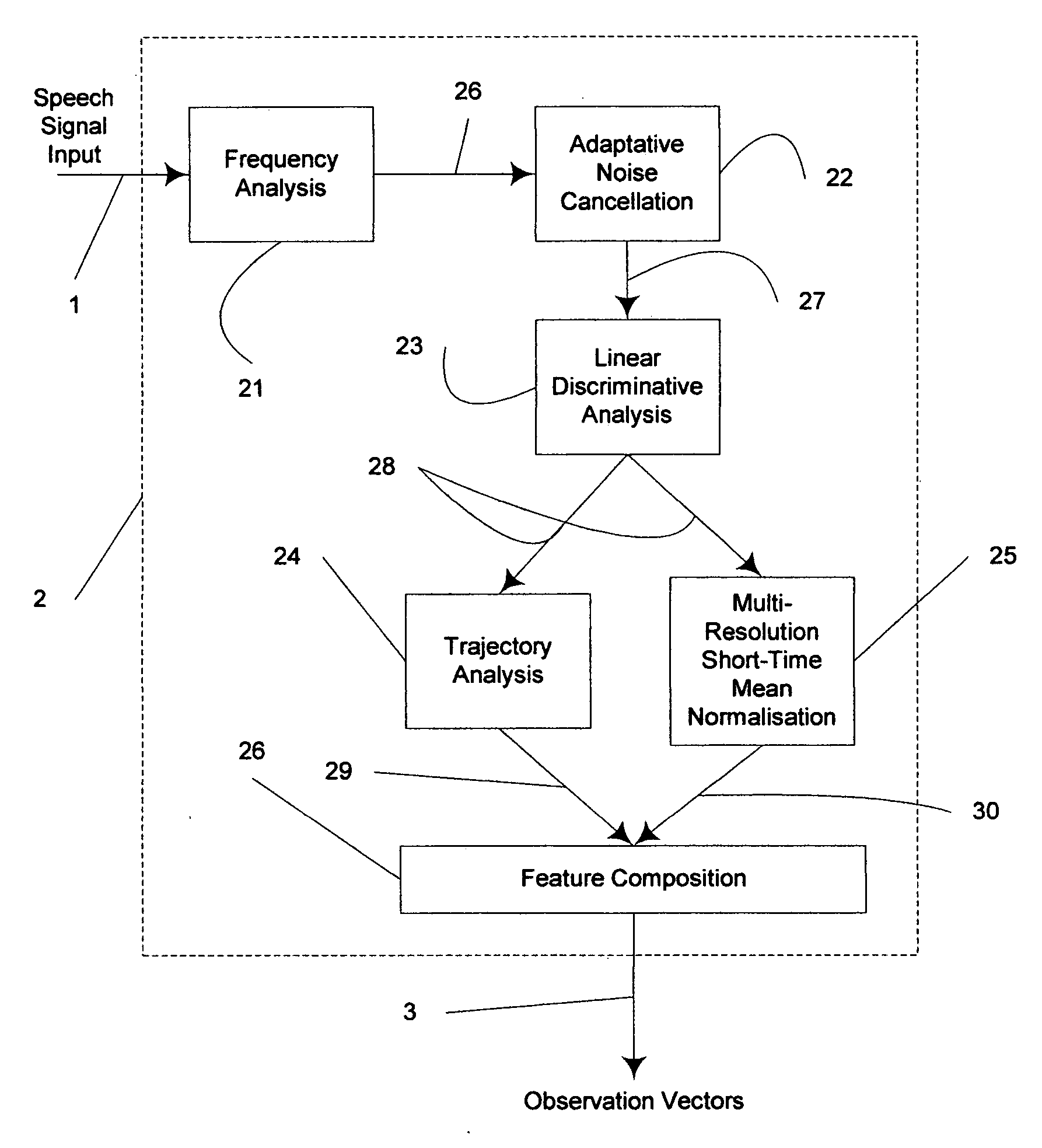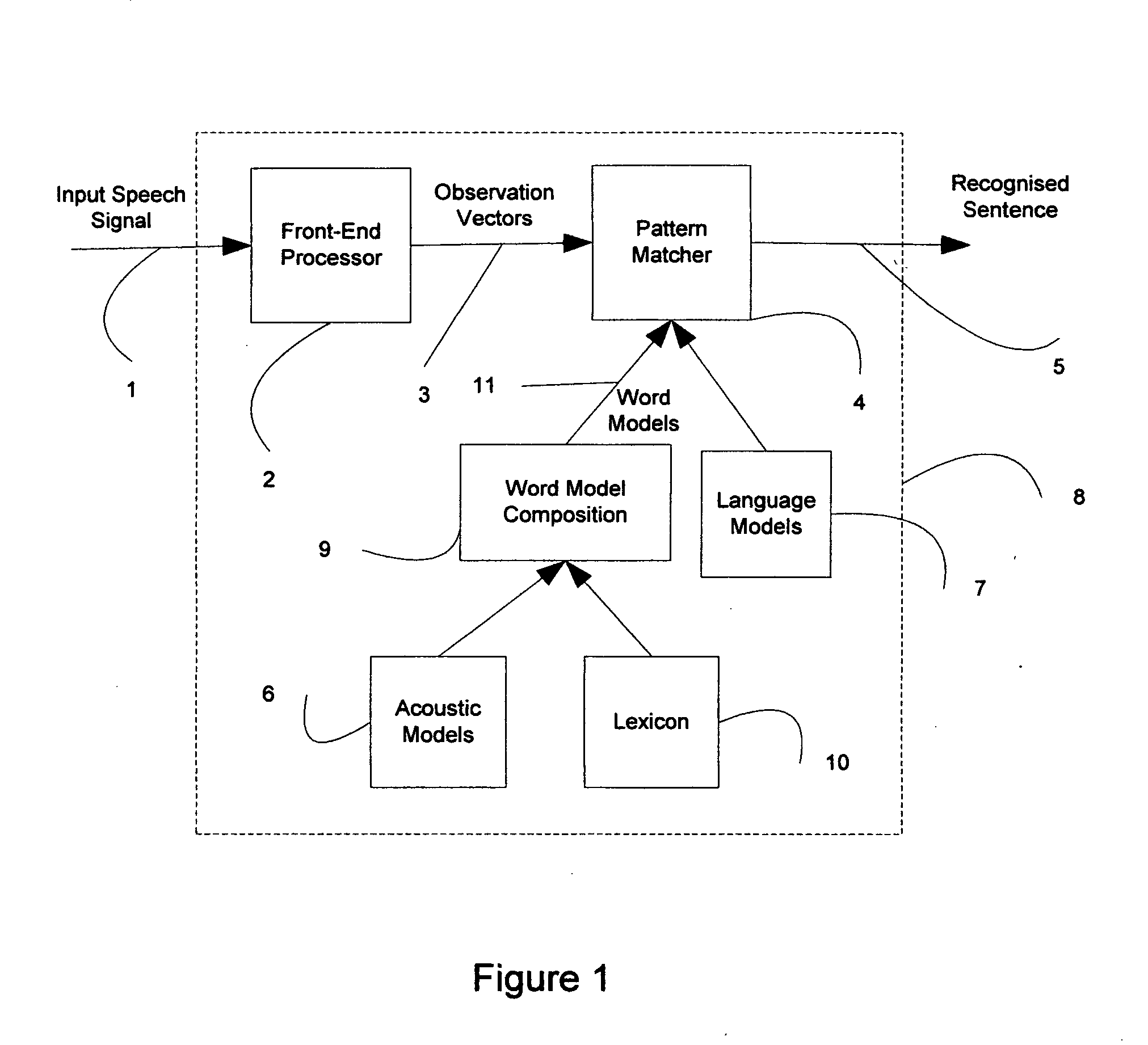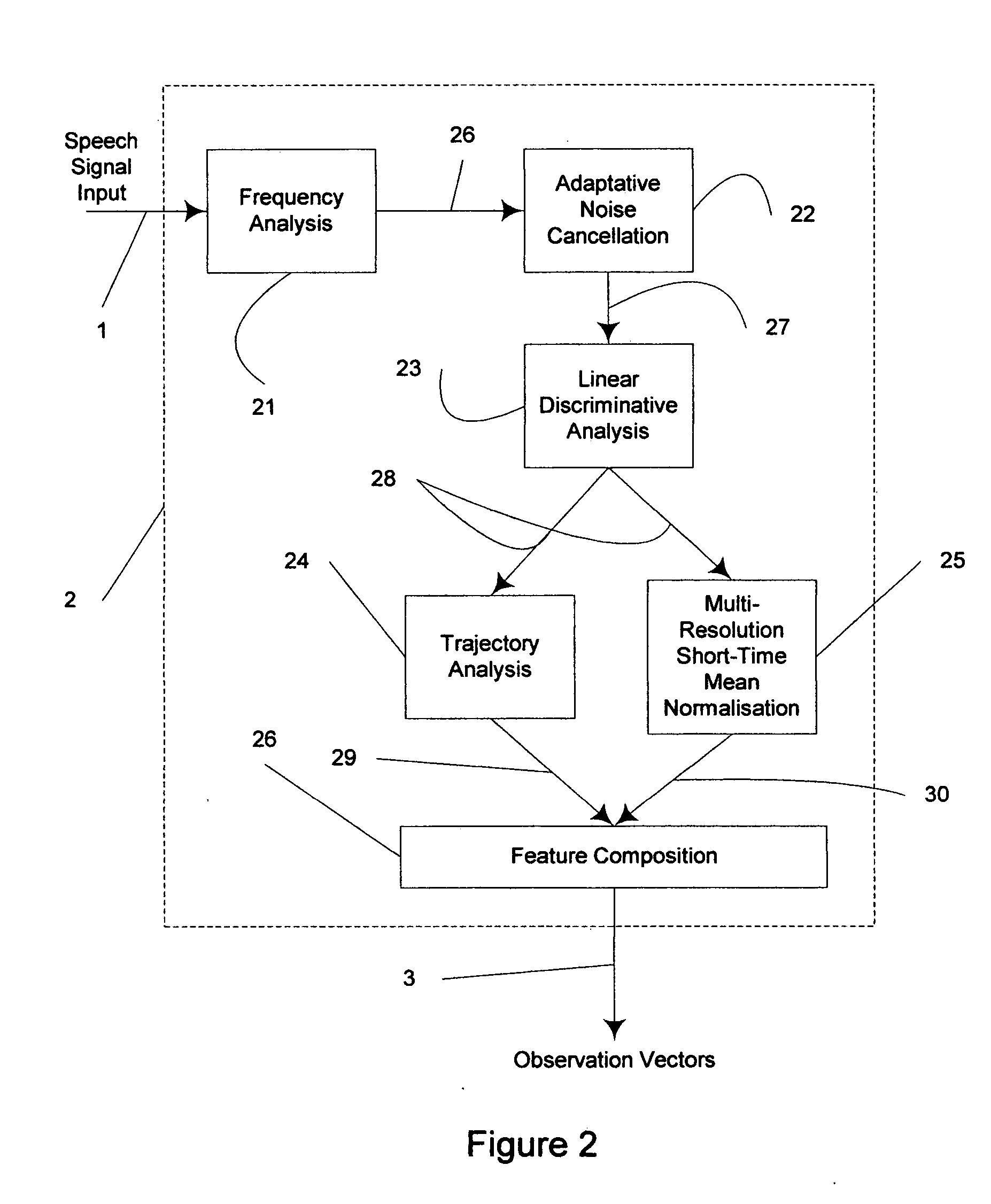Signal processor for robust pattern recognition
- Summary
- Abstract
- Description
- Claims
- Application Information
AI Technical Summary
Benefits of technology
Problems solved by technology
Method used
Image
Examples
Embodiment Construction
[0023] An embodiment of the invention will now be described.
[0024] Referring to FIG. 2, a signal processor 2 for use as the front-end processor of a pattern recogniser such as a speech recogniser includes a frequency analysis module 21 to characterise the spectral content of the input speech, an adaptive noise cancellation module 22 to remove any additive noise, a linear discriminant analysis module 23 to reduce dimensionality and increase class separability, a trajectory analysis module 24 to capture the temporal variation of the signal, and a multi-resolution short-time mean normalisation module 25 to reduce the channel and speaker variations.
[0025] The adaptive noise cancellation module 22 reduces the sensitivity of the speech recogniser 2 to background noise. The adaptive noise cancellation module 22 estimates the parameters needed for a noise cancellation algorithm on an utterance by utterance basis. As will become apparent, no manual tuning is required to find the optimal pa...
PUM
 Login to View More
Login to View More Abstract
Description
Claims
Application Information
 Login to View More
Login to View More - R&D
- Intellectual Property
- Life Sciences
- Materials
- Tech Scout
- Unparalleled Data Quality
- Higher Quality Content
- 60% Fewer Hallucinations
Browse by: Latest US Patents, China's latest patents, Technical Efficacy Thesaurus, Application Domain, Technology Topic, Popular Technical Reports.
© 2025 PatSnap. All rights reserved.Legal|Privacy policy|Modern Slavery Act Transparency Statement|Sitemap|About US| Contact US: help@patsnap.com



